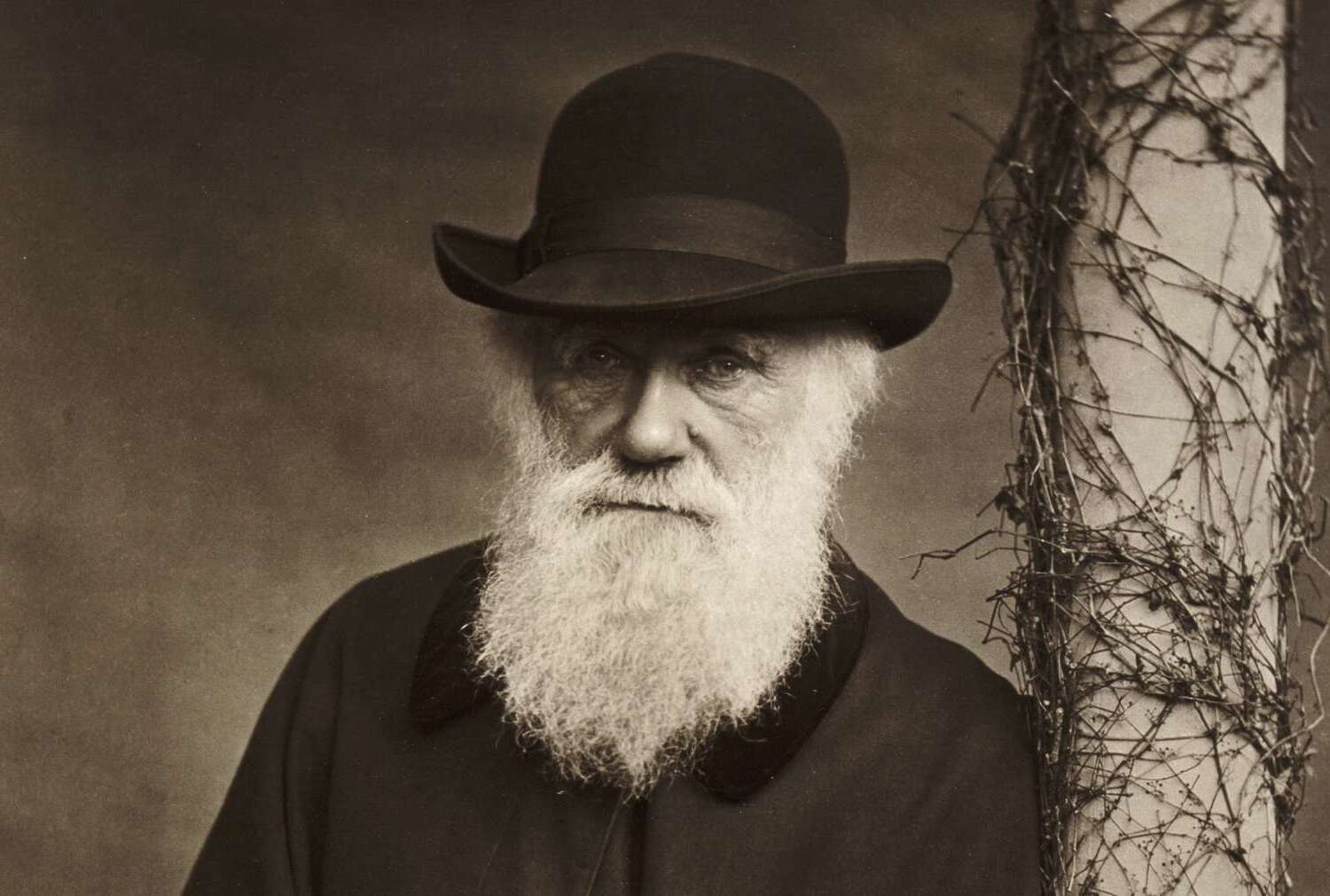
Charles Darwin, born on February 12, 1809, in Shrewsbury, England, is a name synonymous with the theory of evolution. His groundbreaking work, particularly the concept of natural selection, has forever changed our understanding of life on Earth. But who was Charles Darwin beyond his scientific achievements? This article delves into 34 intriguing facts about Darwin, from his early life and education to his monumental voyage on the HMS Beagle and his lasting impact on science and society. Whether you're a student, a science enthusiast, or just curious about this iconic figure, these facts will give you a deeper appreciation of Darwin's contributions and legacy.
Key Takeaways:
- Charles Darwin, born in 1809, revolutionized science with his theory of evolution. His observations on the natural world continue to inspire new generations of scientists and educators.
- Darwin's legacy endures as one of the most significant figures in the history of science. His theory of evolution by natural selection remains a cornerstone of modern biology.
Early Life and Family
Charles Darwin's early years were marked by a rich family background and a budding interest in the natural world.
- Charles Robert Darwin was born on February 12, 1809, in Shrewsbury, England. He was the fifth of six children in his family.
- His father, Robert Waring Darwin, was a doctor, and his mother, Susannah Wedgwood, was the daughter of the famous potter Josiah Wedgwood. This family heritage influenced Darwin's scientific curiosity.
Education and Interests
Darwin's education and early interests set the stage for his future scientific endeavors.
- Darwin attended Shrewsbury School, where he developed a keen interest in natural history. He collected rocks, pieces of bark, and insects.
- Despite his father's wishes for him to become a doctor, Darwin's passion for science led him to study at the University of Edinburgh Medical School. However, he left without completing his medical degree due to poor health and lack of interest.
- During his time at the University of Edinburgh, Darwin became an avid beetle collector. This hobby honed his observational skills and sparked his interest in the natural world.
The Voyage of the HMS Beagle
Darwin's journey aboard the HMS Beagle was a pivotal moment in his scientific career.
- In 1831, at the age of 22, Darwin embarked on a five-year voyage aboard the HMS Beagle. The journey was originally intended to last two years but was extended due to the ship's need for repairs.
- During the voyage, Darwin made significant geological discoveries, observing the formation of atolls, the distribution of fossils, and geological changes due to earthquakes.
Discoveries in the Galapagos Islands
The Galapagos Islands provided Darwin with crucial observations that shaped his theory of evolution.
- One of the most significant stops on the HMS Beagle was the Galapagos Islands. Darwin collected numerous species of finches, tortoises, and other organisms.
- The finches collected by Darwin had distinct beak shapes and sizes, adapted to specific food sources on different islands. This observation led him to conclude that species could adapt to their environments through natural selection.
- Darwin also observed the tortoises on the Galapagos Islands, noting that different species had distinct shell shapes and sizes. These variations supported his idea that species could adapt to their environments over time.
Publication of On the Origin of Species
Darwin's groundbreaking book introduced the concept of natural selection to the scientific community.
- In 1859, Darwin published On the Origin of Species. This work laid out the evidence for evolution and introduced the concept of natural selection.
- Darwin's theory of natural selection posits that species evolve through a process of variation, mutation, genetic drift, and gene flow. The struggle for existence leads to the survival of the fittest.
Personal Life and Challenges
Darwin's personal life was marked by significant challenges and health issues.
- Darwin married Emma Wedgwood, his cousin, in 1839. The couple had ten children, although only six survived to adulthood.
- Darwin suffered from various health issues throughout his life, including severe stomach pain, vomiting, heart palpitations, and painful rashes. The exact nature of his affliction remains a mystery.
- During his voyage on the HMS Beagle, Darwin and his crew often ate the animals they collected, including giant tortoises, pumas, armadillos, and ostriches.
Later Works and Contributions
Darwin continued to make significant contributions to science throughout his life.
- In 1871, Darwin published The Descent of Man, and Selection in Relation to Sex, exploring human evolution and sexual selection.
- Darwin’s book The Expression of the Emotions in Man and Animals, published in 1872, examined how expressions and emotions evolved.
- Darwin’s final book, The Formation of Vegetable Mould, through the Actions of Worms, published in 1881, explored the role of earthworms in soil formation.
Legacy and Impact
Darwin's legacy continues to shape modern science and our understanding of the natural world.
- Darwin’s contributions to science extend far beyond his theory of evolution. He laid the groundwork for modern biology by demonstrating that organisms are part of a lawful system governed by natural laws.
- Despite his groundbreaking work, Darwin faced significant criticism and controversy. Some scientists, like Richard Owen, were initially skeptical of his theory.
- Darwin’s theory of evolution had profound implications for philosophy, challenging traditional views of creation and the role of a divine creator.
- Darwin was honored by burial in Westminster Abbey, a testament to his significant contributions to science and society.
- Darwin’s legacy continues to shape modern science. His theory of evolution remains a cornerstone of biology.
- Darwin’s work on The Expression of the Emotions in Man and Animals predated modern evolutionary psychology by a century.
- Darwin’s observations on biogeography, the study of the geographical distribution of organisms, were instrumental in shaping his theory of evolution.
- Darwin’s study of the fossil record provided crucial evidence for his theory of evolution.
- Although Darwin did not fully understand genetics, his work laid the foundation for later discoveries in this field.
- Darwin’s work had a profound impact on education. His books were widely read and taught in schools.
- Darwin’s ideas have permeated popular culture, influencing literature, art, and philosophy.
- Darwin’s legacy endures as one of the most significant figures in the history of science. His theory of evolution by natural selection remains a cornerstone of modern biology.
- Darwin’s observations on the natural world continue to inspire new generations of scientists and educators.
- Darwin’s work serves as a testament to the power of human curiosity and the importance of scientific inquiry.
- Darwin’s contributions to science and philosophy have had a lasting impact on our understanding of the natural world.
- Darwin’s legacy remains an essential part of our scientific heritage.
Darwin's Lasting Impact
Charles Darwin's work forever changed how we understand life on Earth. From his early beetle-collecting days to his groundbreaking voyage on the HMS Beagle, Darwin's observations and theories laid the foundation for modern biology. His theory of natural selection and the concept of common descent revolutionized science, challenging traditional views and sparking debates that continue today. Despite facing criticism and personal health struggles, Darwin's dedication never wavered. His books, like On the Origin of Species and The Descent of Man, remain essential reading for anyone interested in the natural world. Darwin's legacy endures in classrooms, research labs, and even popular culture, proving that his contributions are timeless. His life and work remind us of the power of curiosity and the importance of questioning the world around us.
Frequently Asked Questions
Was this page helpful?
Our commitment to delivering trustworthy and engaging content is at the heart of what we do. Each fact on our site is contributed by real users like you, bringing a wealth of diverse insights and information. To ensure the highest standards of accuracy and reliability, our dedicated editors meticulously review each submission. This process guarantees that the facts we share are not only fascinating but also credible. Trust in our commitment to quality and authenticity as you explore and learn with us.


